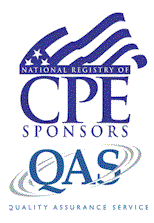Celebrating 25 years serving our friends and customers!
Passive Loss and At-Risk Rules - Mini CourseCode: 25-PASSIVE2
Add to Cart
Course Details
81 pages
Course description and objectives:
With the adoption of the passive loss limitation rules, taxpayers are looking to CPAs for guidance related to what deductions are allowed, disallowed, or suspended. Updating practitioners on the practical aspects of §469, this course addresses the needed skill to handle these pragmatic issues. Fundamentals are reviewed, planning opportunities are identified, and creative strategies are discussed and evaluated along with remaining traditional approaches. The goal of this instructive course is to understand and solve client problems under §469, with emphasis on tax savings ideas. Participants will learn to master the proper administration of these complex and often cumbersome provisions.
Course Objectives:
After reading the materials, participants will be able to:
1. Determine affected taxpayers and calculate passive losses by categorizing income and loss, listing necessary calculation steps, applying the §469 & §1211 limits, and explaining the ordering and suspension of any disallowed losses.
2. Determine a taxpayer's material participation in an activity by:
a. Listing several material participation tests and demonstrating their application to entities such as partnerships and corporations;
b. Explaining the activity grouping rules noting exempt activities;
c. Defining passive activity particularly, the treatment of rental activity as passive; and
d. Locating "nested" activities.
3. Identify and apply special passive loss rules and calculations by:
a. Illustrating alternating use affects on amount realized and adjusted basis and listing additional loss limitations outside of 469;
b. Listing five requirements for the special $25,000 allowance; and
c. Describing recharacterization rules and their purpose.
4. Explain the passive activity audit guidelines identifying audit issues, apply the real estate rental activity credit exception, and clarify the at-risk limit rules as they relate to §469.
Presentation Method: Self-Study
Category: Taxation
CPE credit: 2 Hours
Program Level: Update
Prerequisites: None
Advance Preparation: None
Exam expiration date: Participants must submit exams for grading within one year from the date of purchase



